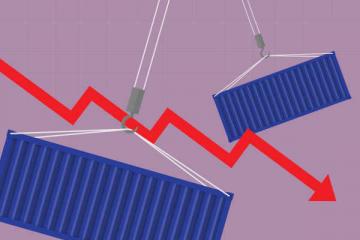Most recently supply chains figured prominently in both the new National Security Strategy and the White House Accelerating Infrastructure Summit. These are another example of the importance of supply chain vs. supply chain competition to modern economics. As if the slew of supply chain related Nobel Prize winners and headlines over the past couple of decades was not enough confirmation already.
In the 48-page National Security Strategy, the words “supply chain” appeared 19 times both as a weapon being (ab)used by rival states and as an arrow in the quiver of democracy that required strengthening and investment. One example of supply chains appearing prominently in national strategy is the Indo-Pacific Economic Framework for Prosperity with its four pillars: trade and the digital economy, supply chains and resilience, clean energy and decarbonization, and tax and anticorruption. The National Security Strategy repeatedly refers to the importance of proper talent, resilience, and security in supply chains. This is supply chain management elevated from business function to strategic advantage.
As I sat in the Zoom peanut gallery of the White House Accelerating Infrastructure Summit, I reflected on how for most of my 30 years in transportation, logistics and supply chain-related fields, I had waited to see a meaningful investment in America’s transportation infrastructure. Secretary Buttigieg has lately been making a lot of appearances and he is a polished and poised speaker; his words that impressed me most were—Keeping it made in America.
I immediately connected much of what was said in the Summit with the National Security Strategy and recent headlines with developments in China and the European Union. We are as a world deglobalizing and retrenching to a certain extent. Some countries may even, to a certain degree, de-industrialize.
The latest headline that shows the power and potential chaos resident in supply chain vs. supply chain competition regards the new U.S. export controls over semiconductors. The U.S. Department of Commerce now requires licensing for shipment of equipment to China that can be used in supercomputers or making semiconductors. This move takes advantages of China’s economic weaknesses, especially the lack of talent. Many US citizens, residents, and green card holders work in Chinese companies, trying to build up their competitiveness. The chaos will reverberate through the U.S. as well. Nevertheless, the whole situation highlights how dependent high technology and innovation are on freely communicating social networks and strong educational institutions free of government controls.
This doesn’t mean that large trading entities like China and India will disappear from U.S. trade, but the U.S. has never had the high level of global trade dependence that many other countries have exhibited. Before Covid, the ratio of U.S. trade to GDP was around 27%, a figure that declined to 23% in 2020. Thanks to its unique geography, bountiful natural resources, and strong domestic supply and consumer markets, the U.S. is uniquely self-sufficient, although nobody should forget that certain key industries are heavily reliant on foreign trade. China’s 2021 trade to GDP ratio was 37% and the EU’s was 86%. It seems likely that the U.S. ratio will decline a bit more.
Supply chain vs. supply chain competition has commenced an era of being key to international rivalries. The U.S.’s semiconductor restrictions will inspire other countries to adopt similar tactics, particularly when many countries must pay off record levels of debt during a period of heightened inflation and reduced demand.
Supply chain managers need to be prepared. This implies an era of increased scarcity combined with increased friction and costs of doing business on the international stage. On the whole, that’s worse news for the rest of the world than it is for the U.S.
SC
MR


Latest Supply Chain News
- Supplier, vendor inequality hinders supply chain’s competitive edge
- 5 strategies for energy market cost and risk reduction
- 5 strategies for energy market cost and risk reduction
- Managing inflationary price risks in supplier-buyer contracts through indexing
- Balanced supply chain management: Setting the stage
- More News
Latest Podcast

 Explore
Explore
Latest Supply Chain News
- Supplier, vendor inequality hinders supply chain’s competitive edge
- 5 strategies for energy market cost and risk reduction
- 5 strategies for energy market cost and risk reduction
- Managing inflationary price risks in supplier-buyer contracts through indexing
- Balanced supply chain management: Setting the stage
- The state of procurement
- More latest news
Latest Resources

Subscribe

Supply Chain Management Review delivers the best industry content.

Editors’ Picks





